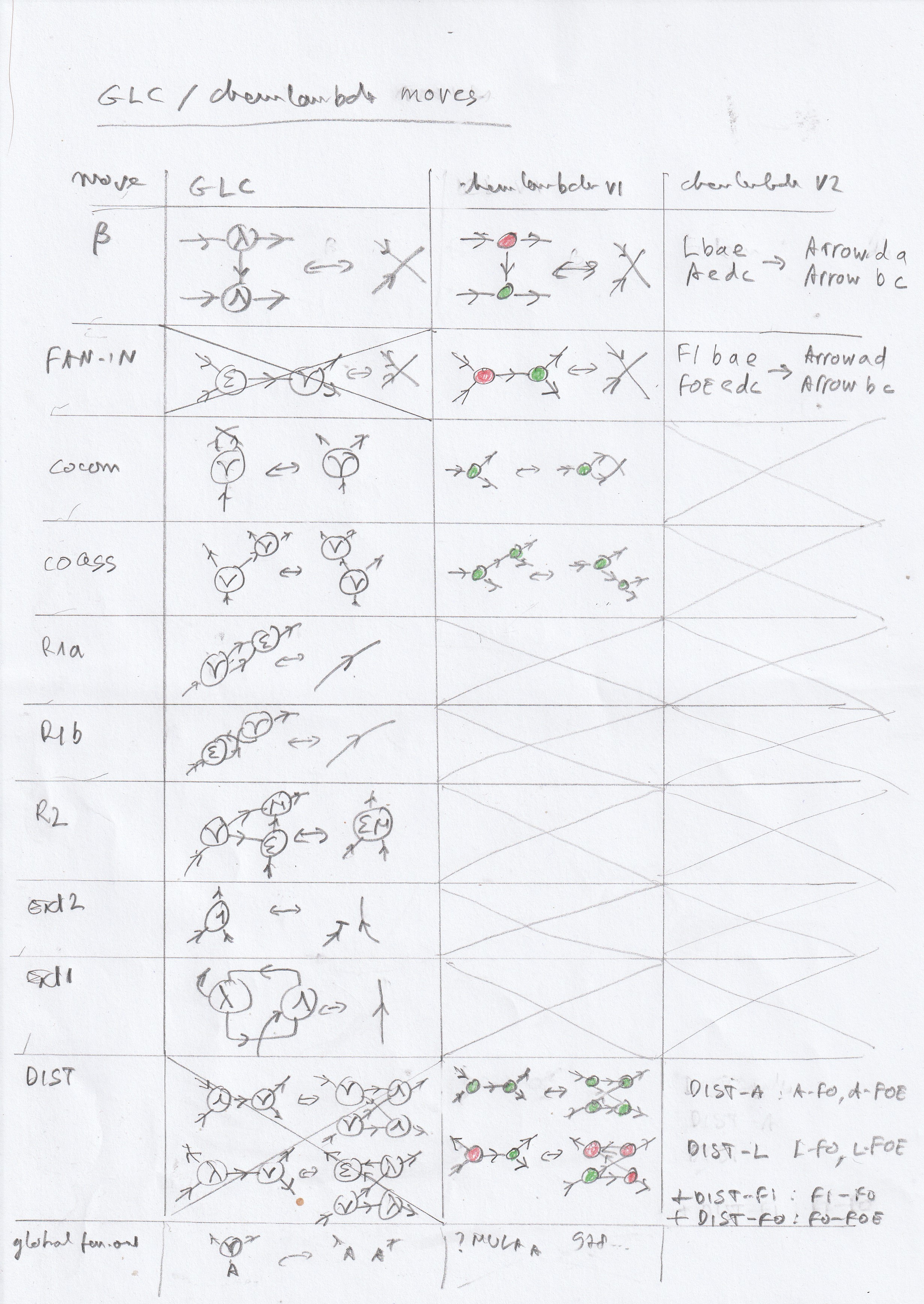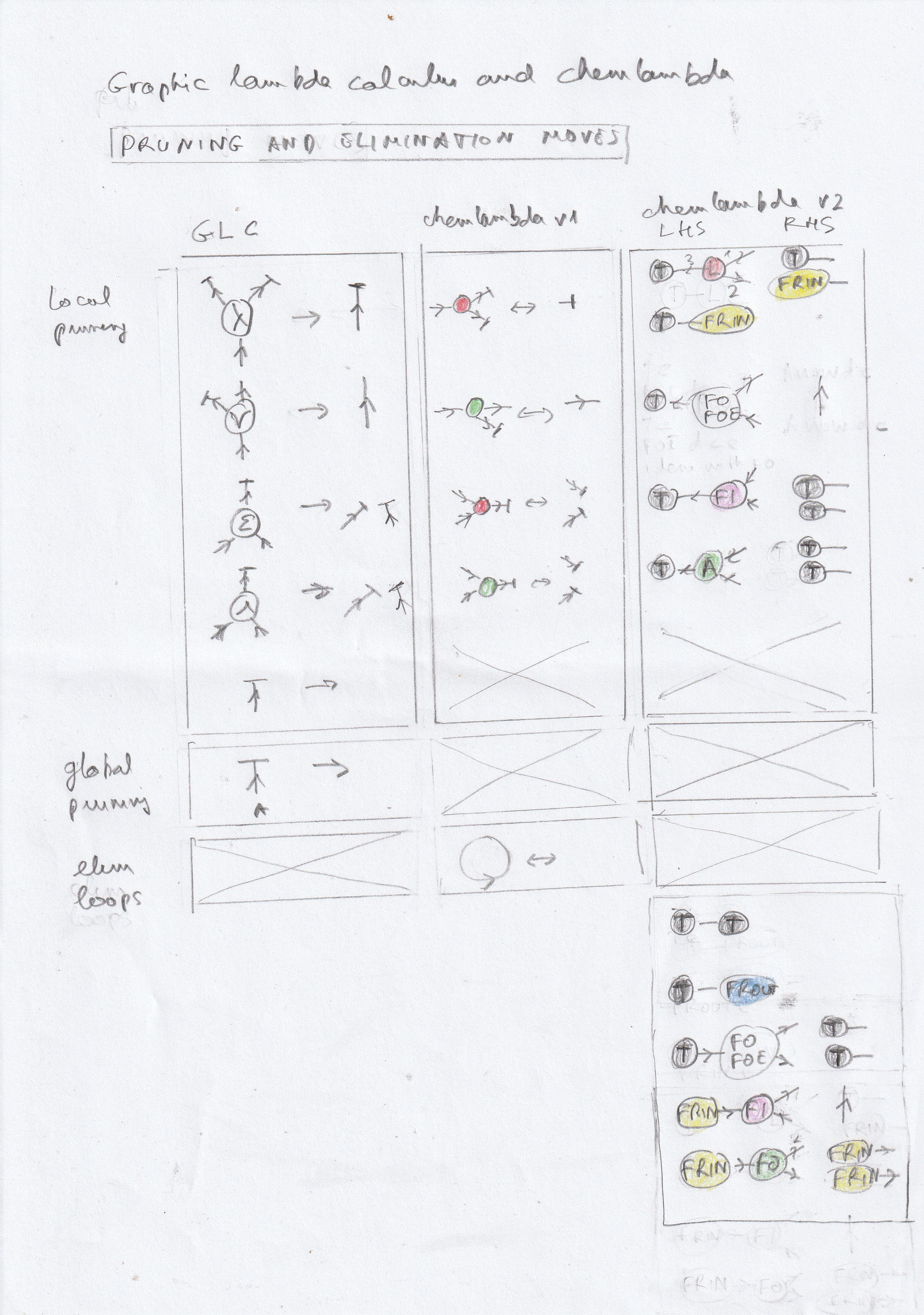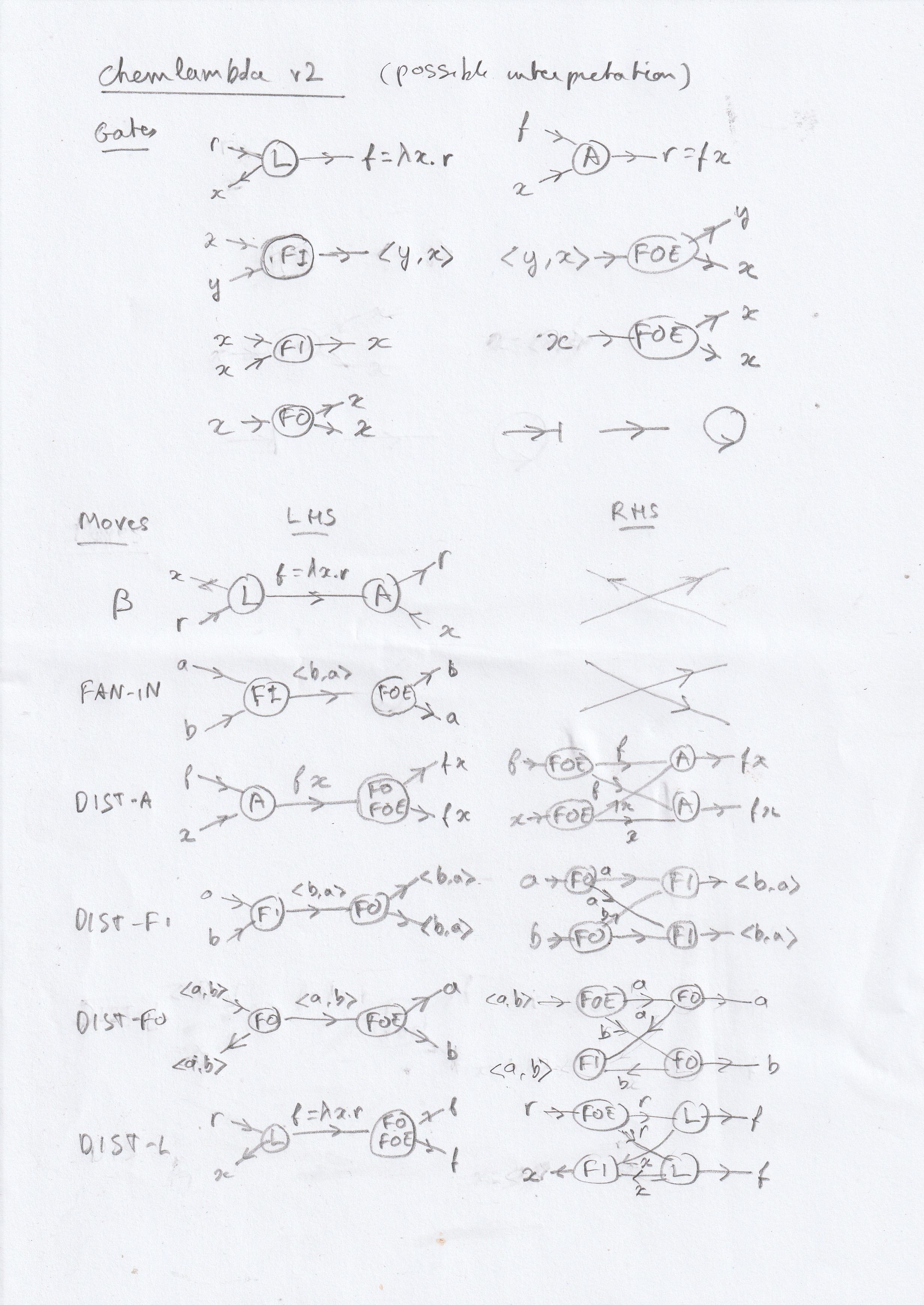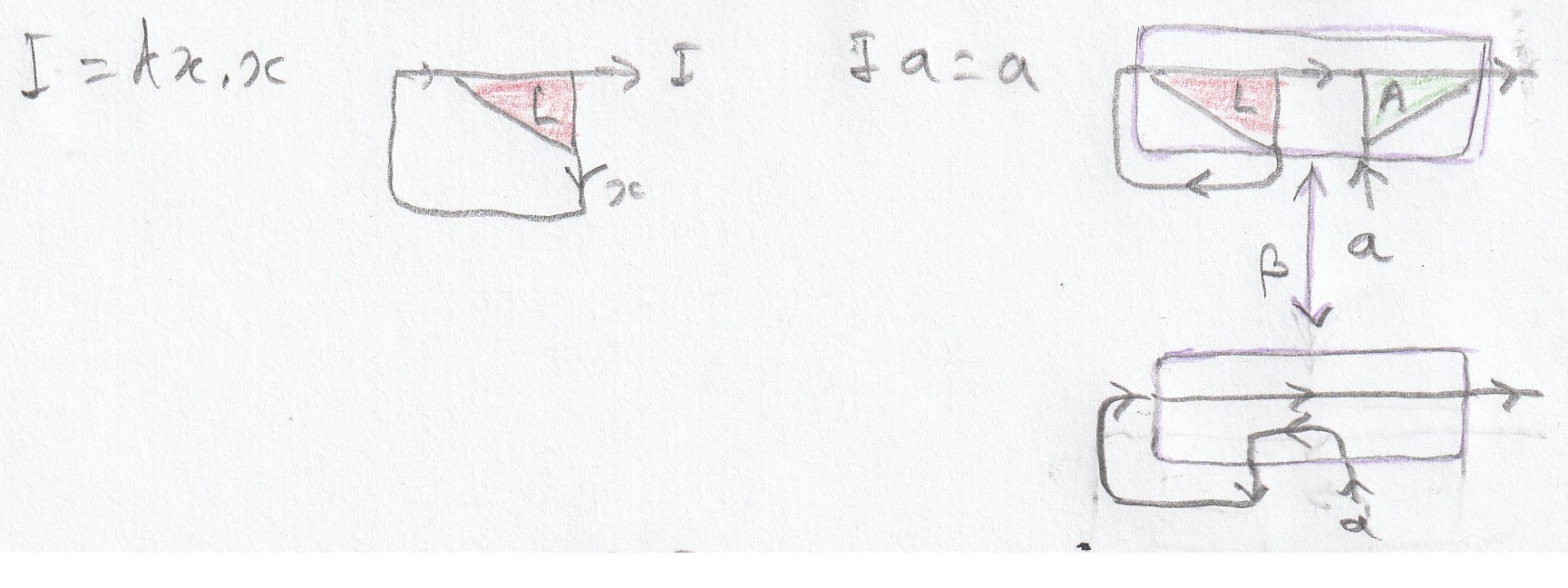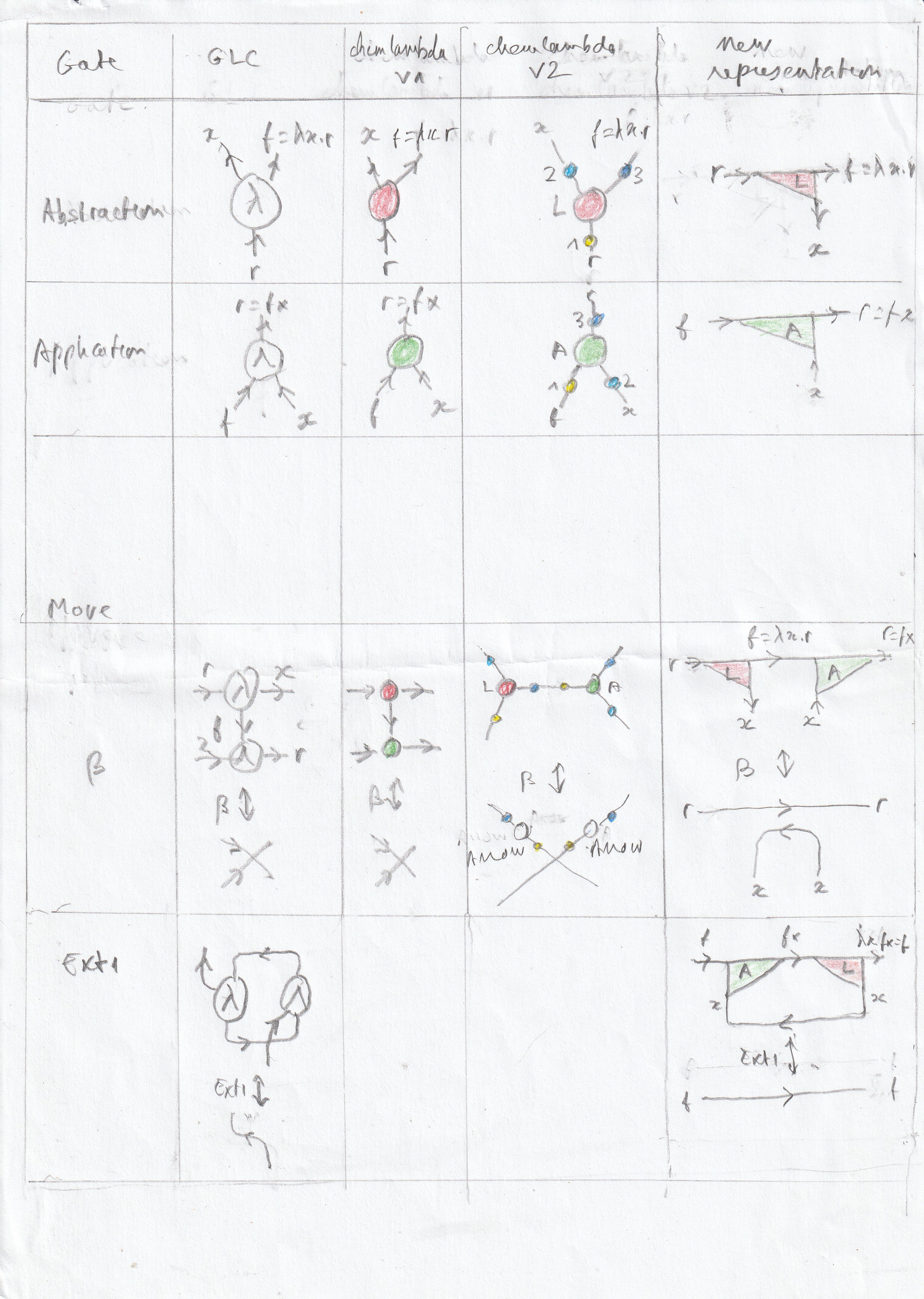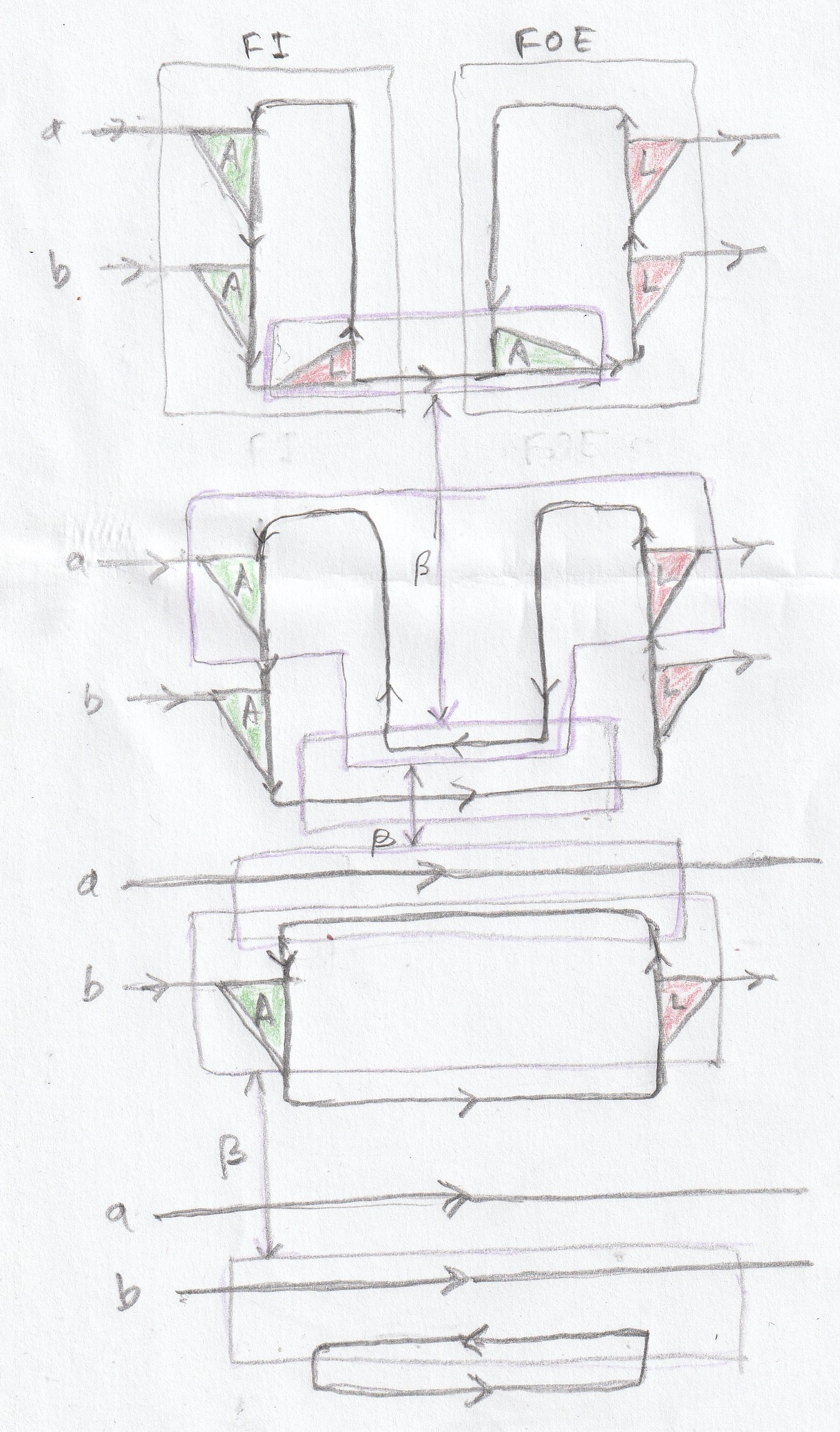In the first version, graphic lambda calculus, there are the following elementary nodes called graphs or gates, labeled by different symbols (see picture) :
- Abstraction : This gate defines a function. It has two outputs : the function being defined, and the variable, and one input : the result of the application of the function to the variable. Defining the function consists in conveniently connecting the variable to the result. For example, for the identity function I, the result is the variable itself, so we just have to connect directly the variable to the result.
- Application : This gate has two input : a function, and the argument to which we want to apply the function, and one output, which is the result of the application of the function to the argument.
- Fan-out : This gate has one input and two outputs which are the duplication of the input.
- Fan-in : The meaning of this gate is more complex. It corresponds to an idempotent right quasigroup operation, which appears in emergent algebras as an abstraction of the geometrical operation of taking a dilation (of coefficient e), based at a point and applied to another point. Approximatively, if x and y are the input and e is the coefficient, then the output is something like x + e (y - x) = (1 - e) x + e y. However, the moves are compatible with this definition.
- Terminal
- Arrow
- Loop
A set of graphical transformation rules called "moves" is define. An example of move is shown in the picture beside, with an example of reduction of a lambda calculus term.

